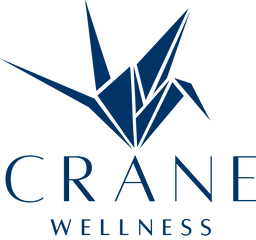Endometriosis: A Growing Concern for Women’s Health
Endometriosis is a chronic, often debilitating condition where tissue similar to the uterine lining grows outside of the uterus. It can affect the ovaries, fallopian tubes, bladder, intestines, and other organs, causing pain, inflammation, and scar tissue known as adhesions.
👉 Between 10–15% of women of reproductive age are affected, which equals approximately 7–11 million women in the U.S. alone. But because endo can take 7–10 years to diagnose, experts believe the true number may be far higher. Many women are misdiagnosed or dismissed, especially women of color—Black and Hispanic women, in particular, are less likely to be properly diagnosed or treated 【1】【2】.

1. Understanding Endometriosis: Who’s Affected & Why It’s So Complex
Fact: More than 8 million women (and girls) are effected by Endometriosis in the US alone - yet the average diagnostic delay is 7 years.
Endometriosis occurs when tissue similar to the uterine lining grows outside the uterus — on ovaries, fallopian tubes, pelvic walls, and sometimes beyond. It causes chronic inflammation, adhesions, scar tissue, and disrupted micro‑circulation.
🔎 Prevalence & Undiagnosed Burden
-
Globally, around 10-15% of women and girls of reproductive age are affected. World Health Organization+1
-
In the U.S., estimates suggest more than 11% of women aged 15‑44 may experience endometriosis. Office on Women's Health+1
-
Translating that into numbers: if ~76 million U.S. women fall in the 15‑44 age range, 11% equals ~8.3 million women.
-
Studies note large diagnostic delays: average ≈ 6.7 to 8.5 years from symptom onset to formal diagnosis. PMC+1
-
Ethnic disparities exist: Some research indicates that women of East Asian descent may be more likely to have endometriosis lesions identified, though under‑diagnosis is common across all groups. Black and Hispanic women are far less likely to be diagnosed or properly treated and may go one suffering for years. Wikipedia+1
Because many cases remain undiagnosed, the actual number of affected U.S. women may well exceed 8 million.
🧠 Why Endo Is So Challenging
-
Symptoms overlap with IBS, chronic pelvic pain, fibroids, and ovarian cysts
-
Diagnosis often requires laparoscopic surgery
-
Micro‑circulation and fibrin (scar tissue) create chronic pain cycles
-
Hormonal shifts and systemic inflammation feed into the lesion growth
2. Endometriosis and Fertility: What You Should Know

Endometriosis is one of the leading causes of infertility in women, even in its early stages. Here's how it can affect reproductive health:
-
🧬 Poor egg quality: Chronic inflammation can damage ovarian reserve
-
🧪 Impaired ovulation: Hormonal disruption may interfere with follicle development
-
🧫 Toxic peritoneal environment: Inflammatory cytokines impair fertilization and implantation
-
🩸 Physical obstructions: Adhesions can block tubes or alter uterine structure
-
🩺 Pain during intercourse: For many women, sex becomes painful or even impossible
By supporting circulation and reducing fibrin and inflammation, Nattokinase may indirectly support more optimal reproductive function.
3. How Circulation & Fibrin Impact Endometriosis
One less‑talked‑about facet of endo is microvascular dysfunction and fibrin deposition within lesions. Here’s how it works:
-
Inside the pelvis, endometrial‑like tissue triggers inflammatory cascades and attracts fibrin (a protein involved in clotting and scar formation)
-
Fibrin creates adhesions and scar tissue, which compromise blood and lymphatic flow
-
Poor blood flow intensifies hypoxia (low oxygen) in lesions, perpetuating pain, fibrosis and estrogen dominance
The Role of Fibrin in Endometriosis Pain
Fibrin can form around endometrial lesions, contributing to adhesions that cause:
-
Chronic pelvic pain
-
Bloating and digestive discomfort
-
Painful periods
-
Painful intercourse
-
Difficulty with egg release and implantation
✅ Where Nattokinase Fits In
Nattokinase is a powerful fibrinolytic enzyme derived from fermented soybeans (Natto), traditionally consumed in Japan for heart and circulatory health.
🔬 Scientific studies show that nattokinase can help break down fibrin and improve blood flow, which may benefit women with endometriosis by:
-
Helps dissolve fibrin adhesions and improve micro‑circulation
-
Supports healthy blood flow and endothelial function, supporting oxygen delivery to tissues
-
May reduce lesion‑related scar tissue formation and minimize stagnation of inflammatory processes - promoting a more balanced inflammatory response.
This means nattokinase may provide support for women with endo by targeting a root contributor — impaired circulation and fibrin build‑up — rather than solely addressing symptoms.
🧪 One study found nattokinase effective at reducing blood clot formation and improving tissue perfusion. These effects may help reduce some of the pain and stagnation associated with endometriosis lesions 【3】【4】.
3. Research Snapshot: Nattokinase & Endometriosis
While direct clinical trials of nattokinase for endometriosis are limited, several related findings give promising indications:
-
Studies show nattokinase supports vascular health and blood flow to peripheral tissues
-
Fibrin‑reducing therapies are considered beneficial in reducing scar formation and adhesions in pelvic conditions
-
Given endo’s links with impaired micro‑circulation, targeting fibrin and blood flow is rational
Note: Always consult your healthcare provider if you have a bleeding disorder or are on anticoagulants, as nattokinase has blood‑flow effects.
4. Lifestyle Strategies & Daily Rituals for Women with Endometriosis
Combining nattokinase with lifestyle habits significantly amplifies its benefit. Here’s a structured toolkit:
📅 4‑Week Support Plan
| Week | Focus Area | Sample Habit |
|---|---|---|
| Week 1 | Circulation | Take nattokinase (as directed). Try gentle yoga for 15 min. |
| Week 2 | Anti‑Inflammatory Diet | Low‑glycemic meals: salmon, leafy greens, turmeric. Avoid processed sugar. |
| Week 3 | Gut & Hormone Support | Add probiotic‑rich food, track cycle, start journaling stressors. |
| Week 4 | Hormonal Balance | Deep sleep routine, reduce alcohol, take iodine support (see below). |
🧋 Diet & Movement Tips
-
Move daily: 10‑minute walk after meals helps pelvic circulation and digestion.
-
Warm baths: Epsom salt soak improves circulation and relaxes pelvic muscles.
-
Sleep: Aim for 7‑8 hours to support tissue repair and hormone balance.
-
Food support: An anti-inflammatory approach to diet.
-
Mind‑body: Techniques like breathwork and meditation help manage pain perception and stress‑driven hormone swings.
Other Natural Approaches That May Help
Alongside Nattokinase and Iodine, many holistic practitioners recommend anti-inflammatory lifestyle support:
✅ Turmeric (Curcumin)
Shown to reduce prostaglandin production and inflammation markers 【5】
✅ Omega-3 Fatty Acids
Help lower chronic inflammation and support hormone balance
✅ NAC (N-Acetyl Cysteine)
Antioxidant that supports liver detox pathways and hormonal regulation
✅ Ginger
Can help reduce menstrual pain and cramping
✅ Bromelain & Quercetin
Enzymes and flavonoids that reduce tissue inflammation and immune overreaction
Anti-Inflammatory Diet Tips

📋 Foods that may help reduce endo-related inflammation:
-
Wild salmon
-
Berries and dark leafy greens
-
Bone broth or collagen
-
Green tea
-
Flaxseeds and chia
-
Beets and carrots
-
Turmeric or ginger shots
-
Low-sugar smoothies
-
Cruciferous veggies (broccoli, cauliflower)
🧃 Try a daily anti-inflammatory juice:
Celery + green apple + lemon + ginger + cucumber
🧠 Did You Know? Some studies have shown that women who follow an anti-inflammatory diet and supplement with omega-3s and antioxidants may experience fewer flare-ups and reduced pelvic pain.
5. Hormone & Thyroid Support: Why Iodine Matters Too
Many women with endo also experience hormonal imbalance and sometimes thyroid dysfunction—which can worsen fatigue, mood swings and skin issues.
🔬 How Iodine Supports Hormonal Health
-
Iodine is critical for thyroid hormone production, which regulates metabolism, energy and hormonal cycles
-
Inadequate iodine may contribute to estrogen dominance, a known factor in endo
-
Pure Oceanic Root Iodine is a clean, Japanese‑kelp derived iodine supplement that supports thyroid health, hormone regulation and metabolism
When paired with nattokinase’s circulation support, you create a holistic internal wellness stack:
-
Nattokinase = circulation & fibrin reduction
-
Iodine = hormone and metabolic balance
6. Safe Use & FAQ Section
Q: Is nattokinase safe for endometriosis?
A: Generally yes, but because nattokinase affects fibrin and blood flow, women with bleeding disorders or on anticoagulants should consult a doctor.
Q: How soon will I feel relief?
Results vary, but many report improved energy, less pelvic heaviness or pain within 4‑8 weeks of consistent use + lifestyle support.
Q: Can I take nattokinase during menstruation or flair‑ups?
Yes. Consistent daily use is recommended. Avoid high‑dose use if you experience heavy bleeding; check with your provider.
Q: Is Pure Oceanic Root Iodine safe for hormonal support?
Yes, when taken at recommended doses. Avoid if you already have hyperthyroidism unless supervised. Consult your physician if you have any thyroid issues before taking.
Q: What makes a good nattokinase supplement?
Look for:
-
Authentic Japanese natto‑derived enzyme
-
Verified fibrinolytic units (FU)
-
Transparent testing and clean ingredients
- Verified made and sourced in Japan
7. Final Thoughts: You’re Seen, You’re Supported
Living with endometriosis is multifaceted — emotionally, physically and hormonally. You deserve tools that go beyond temporary fixes. By addressing circulation, inflammation and hormone balance from the inside out, you empower your body to heal more resiliently.
At Crane Wellness, we’re committed to supporting you with science‑backed nutrition, Japanese heritage quality and real solutions for real women.
→ Learn More about Nattokinase Blend
→ Explore Pure Oceanic Root Iodine
Remember: You’ve got this. You're not alone. One day, one ritual, one breath at a time.










